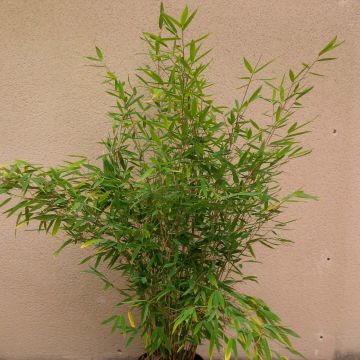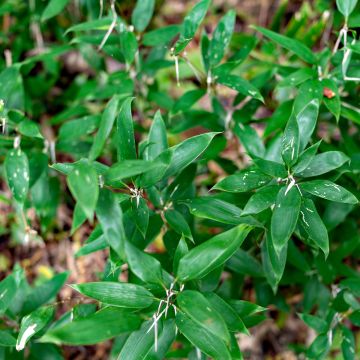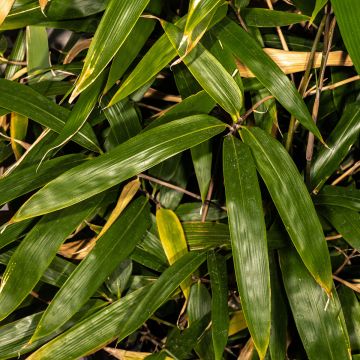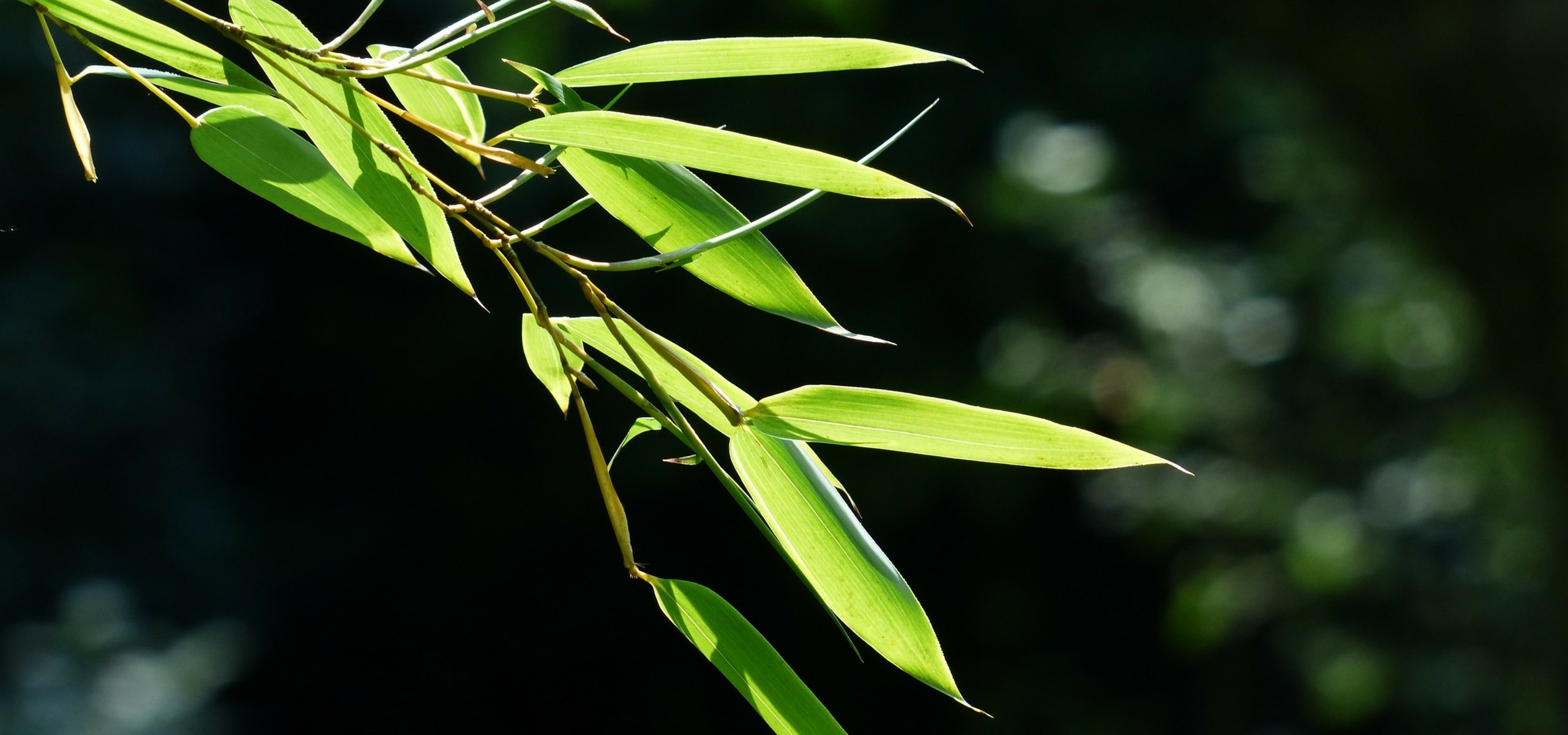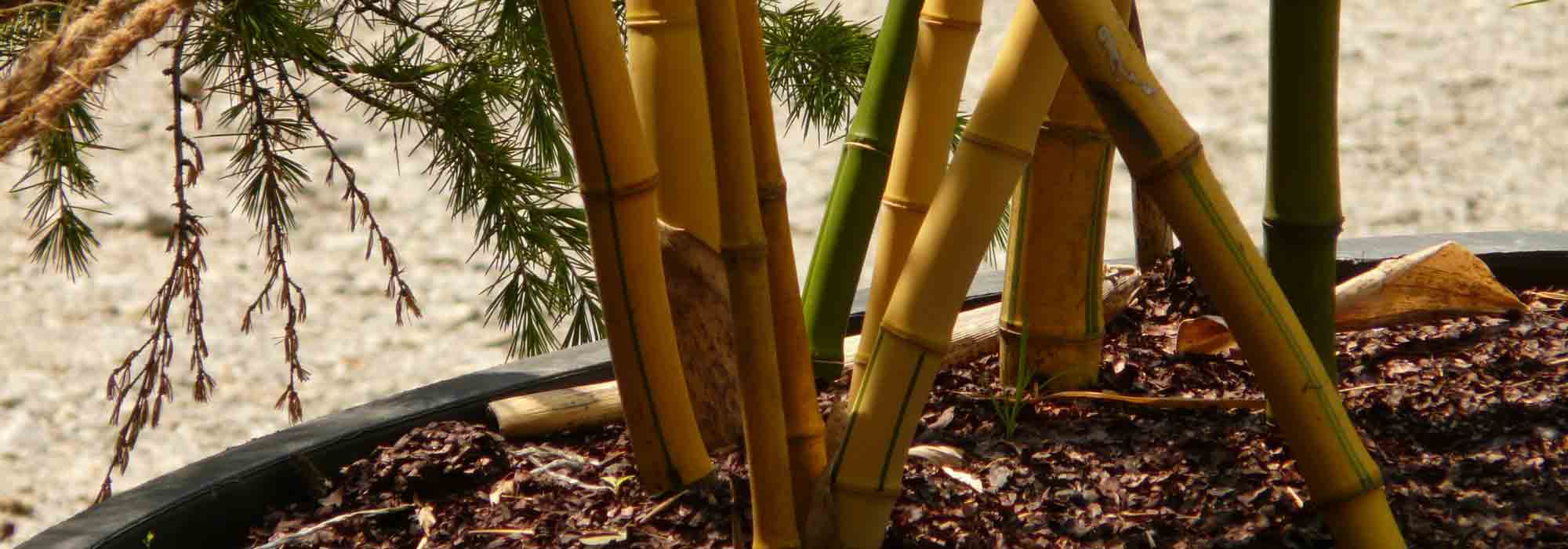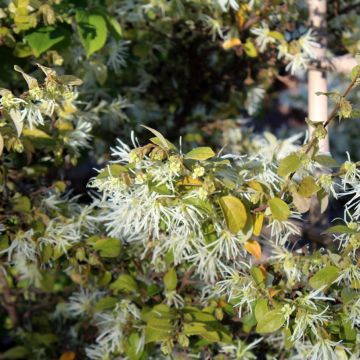

Sasaella masamuneana Albostriata
Sasaella masamuneana Albostriata
Sasaella masamuneana Albostriata
White-striped hairy Bamboo
Nice appearance after 6 months. It has spread well in width but not much in height. It's a dwarf bamboo, we'll see how it goes in the future.
Jean Francois, 27/08/2024
Special offer!
Receive a €20 voucher for any order over €90 (excluding delivery costs, credit notes, and plastic-free options)!
1- Add your favorite plants to your cart.
2- Once you have reached €90, confirm your order (you can even choose the delivery date!).
3- As soon as your order is shipped, you will receive an email containing your voucher code, valid for 3 months (90 days).
Your voucher is unique and can only be used once, for any order with a minimum value of €20, excluding delivery costs.
Can be combined with other current offers, non-divisible and non-refundable.
Home or relay delivery (depending on size and destination)
Schedule delivery date,
and select date in basket
This plant carries a 24 months recovery warranty
More information
We guarantee the quality of our plants for a full growing cycle, and will replace at our expense any plant that fails to recover under normal climatic and planting conditions.

Would this plant suit my garden?
Set up your Plantfit profile →
Description
Sasaella masamuneana Albostriata is a bamboo that stands out, not for its modest stature, but because of its exceptionally bright, long leaves variegated with cream-white. With a lovely dense, vigorous habit, it thrives in almost any situation and withstands harsh winters. Show it off in front of a screen of tall bamboo. Whether in the ground or in pots, it is perfect for adding a beautiful touch of light to small gardens, terraces or balconies.
Sasaella masamuneana Albostriata (synonym Arundinaria atropurpurea Albostriata) is a small, bushy bamboo with a regular, rounded habit, slightly trailing at the periphery. Its rhizome is of the running type (leptomorph), but it remains fairly easy to control. Perfectly adapted to harsh winters, it comes from a botanical species native to northern Japan and belongs to the poaceae or grass family. This bamboo establishes slowly, then its growth accelerates significantly. It has thin canes of brown or very dark green sometimes turning red or garnet, with a diameter of 2 to 5 mm (1in), flattened at the nodes. On these canes, the sheaths are evergreen and light beige. Hidden under the foliage, they rise up to an average of 1.75 m (6ft) from the ground (up to a maximum of 2.50 m (8ft)). Pruned every spring, this bamboo can be maintained at a height of 70 cm (28in). It spreads by means of its rhizomes over about 2 m (7ft) on the ground. The canes branch out into thin, short branches, adorned with numerous large leaves measuring 10 to 20 cm (4 to 8in) long. Its foliage is evergreen, but partially falls in winter. The leaves are light green and more or less streaked with cream-white to pale yellow along their entire length, depending on the exposure, soil type and watering. The Albostriata masamuneana Bamboo is perfectly suited for pruning, even very short: this operation is even recommended in spring to encourage the appearance of new, more variegated leaves.
Perfectly hardy and vigorous, this bamboo thrives in moist, even chalky or rocky soil, preferably in partial shade. It works well in a flowerbed, as a standalone clump, in a small hedge or even in a pot on the terrace or balcony. It can be useful to use anti-rhizome barriers to contain its growth. With true elegance, it is perfectly suited for Japanese, wild, exotic or contemporary gardens. It can be combined with other non-aggressive bamboos such as Fargesia (Fargesia denudata, Fargesia rufa, Fargesia murielae), Japanese maples in partial shade, dwarf conifers with blue foliage (Picea pungens Jeddeloh) or even quercifolia hydrangea for example. It can also form very bright small hedges, along a path in a large garden or to mark the boundary of a property. This bamboo responds very well to pruning, it will adapt to the requirements of each gardener. It is well suited for container cultivation, provided that the oldest canes are regularly removed to make room for new shoots that emerge from the ground in summer.
Sasaella masamuneana Albostriata in pictures




Plant habit
Foliage
Botanical data
Sasaella
masamuneana
Albostriata
Poaceae
White-striped hairy Bamboo
East Asia
Other Dwarf Bamboos
View all →Planting and care
Sasaella masamuneana Albostriata is very accommodating in terms of exposure, it grows equally well in shade or sun where the variegated colour of its foliage will be more pronounced. Note that the variegation of the foliage also depends on the nature of the soil and its moisture. This bamboo adapts to heavy or rocky soils, as long as it is not too dry or chalky. Ideally, plant it in deep, fertile, acidic to neutral, or even slightly chalky soil at any time of year, in a very sunny location, as it tends to become elongated and lose its beautiful shape in semi-shade situations. It is best planted in late summer or autumn or even in spring. It is low-maintenance, but it is advised to install a rhizome barrier during planting to limit its spread. Perfectly hardy, it can withstand temperatures as low as -24°C (1°F). In the ground, it can tolerate temporary drought.
For container cultivation, use well-draining potting soil and provide organic fertilizer twice a year to prevent leaf yellowing due to excess water and nutrient deficiency. Propagation can be done by rhizome cutting or clump division. This bamboo can be pruned every year in early spring to encourage the development of completely new foliage.
Planting period
Intended location
Care
Planting & care advice
-
, onOrder confirmed
Reply from on Promesse de fleurs
Similar products
Haven't found what you were looking for?
Hardiness is the lowest winter temperature a plant can endure without suffering serious damage or even dying. However, hardiness is affected by location (a sheltered area, such as a patio), protection (winter cover) and soil type (hardiness is improved by well-drained soil).

Photo Sharing Terms & Conditions
In order to encourage gardeners to interact and share their experiences, Promesse de fleurs offers various media enabling content to be uploaded onto its Site - in particular via the ‘Photo sharing’ module.
The User agrees to refrain from:
- Posting any content that is illegal, prejudicial, insulting, racist, inciteful to hatred, revisionist, contrary to public decency, that infringes on privacy or on the privacy rights of third parties, in particular the publicity rights of persons and goods, intellectual property rights, or the right to privacy.
- Submitting content on behalf of a third party;
- Impersonate the identity of a third party and/or publish any personal information about a third party;
In general, the User undertakes to refrain from any unethical behaviour.
All Content (in particular text, comments, files, images, photos, videos, creative works, etc.), which may be subject to property or intellectual property rights, image or other private rights, shall remain the property of the User, subject to the limited rights granted by the terms of the licence granted by Promesse de fleurs as stated below. Users are at liberty to publish or not to publish such Content on the Site, notably via the ‘Photo Sharing’ facility, and accept that this Content shall be made public and freely accessible, notably on the Internet.
Users further acknowledge, undertake to have ,and guarantee that they hold all necessary rights and permissions to publish such material on the Site, in particular with regard to the legislation in force pertaining to any privacy, property, intellectual property, image, or contractual rights, or rights of any other nature. By publishing such Content on the Site, Users acknowledge accepting full liability as publishers of the Content within the meaning of the law, and grant Promesse de fleurs, free of charge, an inclusive, worldwide licence for the said Content for the entire duration of its publication, including all reproduction, representation, up/downloading, displaying, performing, transmission, and storage rights.
Users also grant permission for their name to be linked to the Content and accept that this link may not always be made available.
By engaging in posting material, Users consent to their Content becoming automatically accessible on the Internet, in particular on other sites and/or blogs and/or web pages of the Promesse de fleurs site, including in particular social pages and the Promesse de fleurs catalogue.
Users may secure the removal of entrusted content free of charge by issuing a simple request via our contact form.
The flowering period indicated on our website applies to countries and regions located in USDA zone 8 (France, the United Kingdom, Ireland, the Netherlands, etc.)
It will vary according to where you live:
- In zones 9 to 10 (Italy, Spain, Greece, etc.), flowering will occur about 2 to 4 weeks earlier.
- In zones 6 to 7 (Germany, Poland, Slovenia, and lower mountainous regions), flowering will be delayed by 2 to 3 weeks.
- In zone 5 (Central Europe, Scandinavia), blooming will be delayed by 3 to 5 weeks.
In temperate climates, pruning of spring-flowering shrubs (forsythia, spireas, etc.) should be done just after flowering.
Pruning of summer-flowering shrubs (Indian Lilac, Perovskia, etc.) can be done in winter or spring.
In cold regions as well as with frost-sensitive plants, avoid pruning too early when severe frosts may still occur.
The planting period indicated on our website applies to countries and regions located in USDA zone 8 (France, United Kingdom, Ireland, Netherlands).
It will vary according to where you live:
- In Mediterranean zones (Marseille, Madrid, Milan, etc.), autumn and winter are the best planting periods.
- In continental zones (Strasbourg, Munich, Vienna, etc.), delay planting by 2 to 3 weeks in spring and bring it forward by 2 to 4 weeks in autumn.
- In mountainous regions (the Alps, Pyrenees, Carpathians, etc.), it is best to plant in late spring (May-June) or late summer (August-September).
The harvesting period indicated on our website applies to countries and regions in USDA zone 8 (France, England, Ireland, the Netherlands).
In colder areas (Scandinavia, Poland, Austria...) fruit and vegetable harvests are likely to be delayed by 3-4 weeks.
In warmer areas (Italy, Spain, Greece, etc.), harvesting will probably take place earlier, depending on weather conditions.
The sowing periods indicated on our website apply to countries and regions within USDA Zone 8 (France, UK, Ireland, Netherlands).
In colder areas (Scandinavia, Poland, Austria...), delay any outdoor sowing by 3-4 weeks, or sow under glass.
In warmer climes (Italy, Spain, Greece, etc.), bring outdoor sowing forward by a few weeks.
































